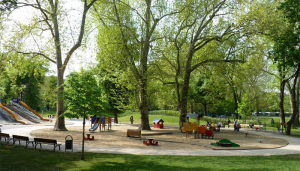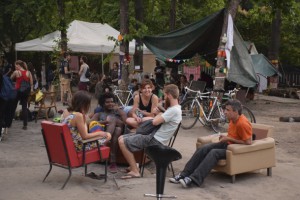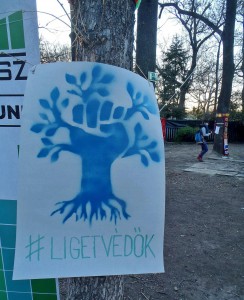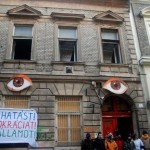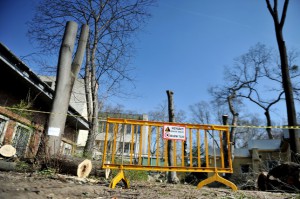 Hello! We in Hungary are in deep protest. The government decided to demolish part of our City Park (Városliget). We don’t like this. So on march 17th 2016, when they started to cut down trees, it was enough. Men and women jumped over the fence, broke the barrier and it was over. Since then, we occupy the area. It is a pretty big complex more than 5 buildings, several floors with its own garden and parking area in the middle of this huge park. There are over 20 people living here now. We build, create, imagine. We started actions outside of camp too, with more or less success. This created lot of attention from the public, so the power holders decided to take action. This is where everyone comes into picture. We need help. We need to grow rapidly, to transform. We need people from all over the globe with experience in nonviolent protest. We have food, place to sleep, love to share. Please please help us with your presence.
Hello! We in Hungary are in deep protest. The government decided to demolish part of our City Park (Városliget). We don’t like this. So on march 17th 2016, when they started to cut down trees, it was enough. Men and women jumped over the fence, broke the barrier and it was over. Since then, we occupy the area. It is a pretty big complex more than 5 buildings, several floors with its own garden and parking area in the middle of this huge park. There are over 20 people living here now. We build, create, imagine. We started actions outside of camp too, with more or less success. This created lot of attention from the public, so the power holders decided to take action. This is where everyone comes into picture. We need help. We need to grow rapidly, to transform. We need people from all over the globe with experience in nonviolent protest. We have food, place to sleep, love to share. Please please help us with your presence.
Statement from Ligetvédők, Occupy City Park Budapest
We the Ligetvédők (Occupy City Park Budapest) have been occupying this area for more than 100 days, for we think it is unjust and harmful to transform Városliget (City Park) into a museum district (Liget Budapest Project). We are locals, civilians and experts, among whom many have been protesting for years against this huge prestige-investment. [Read More]
